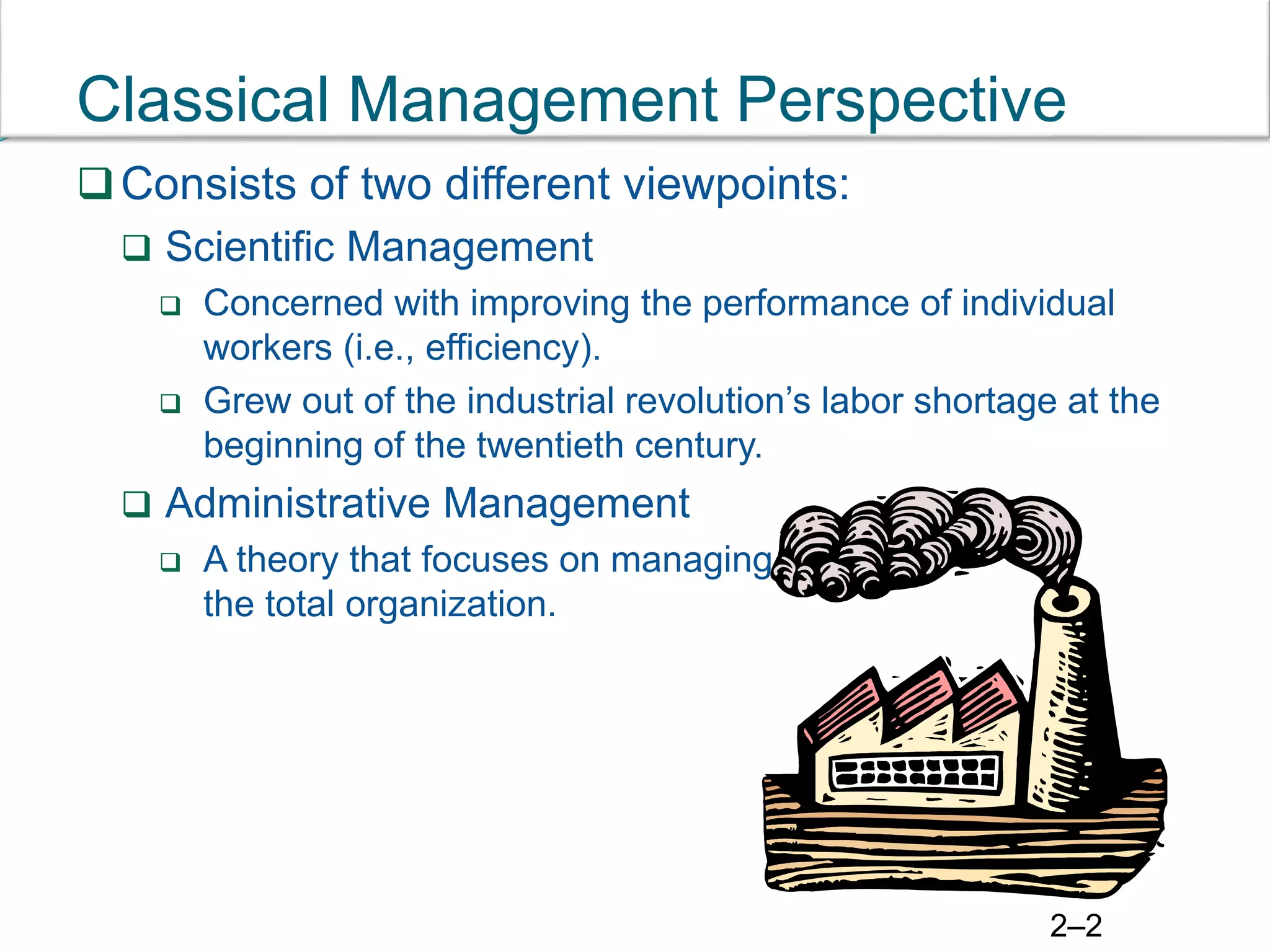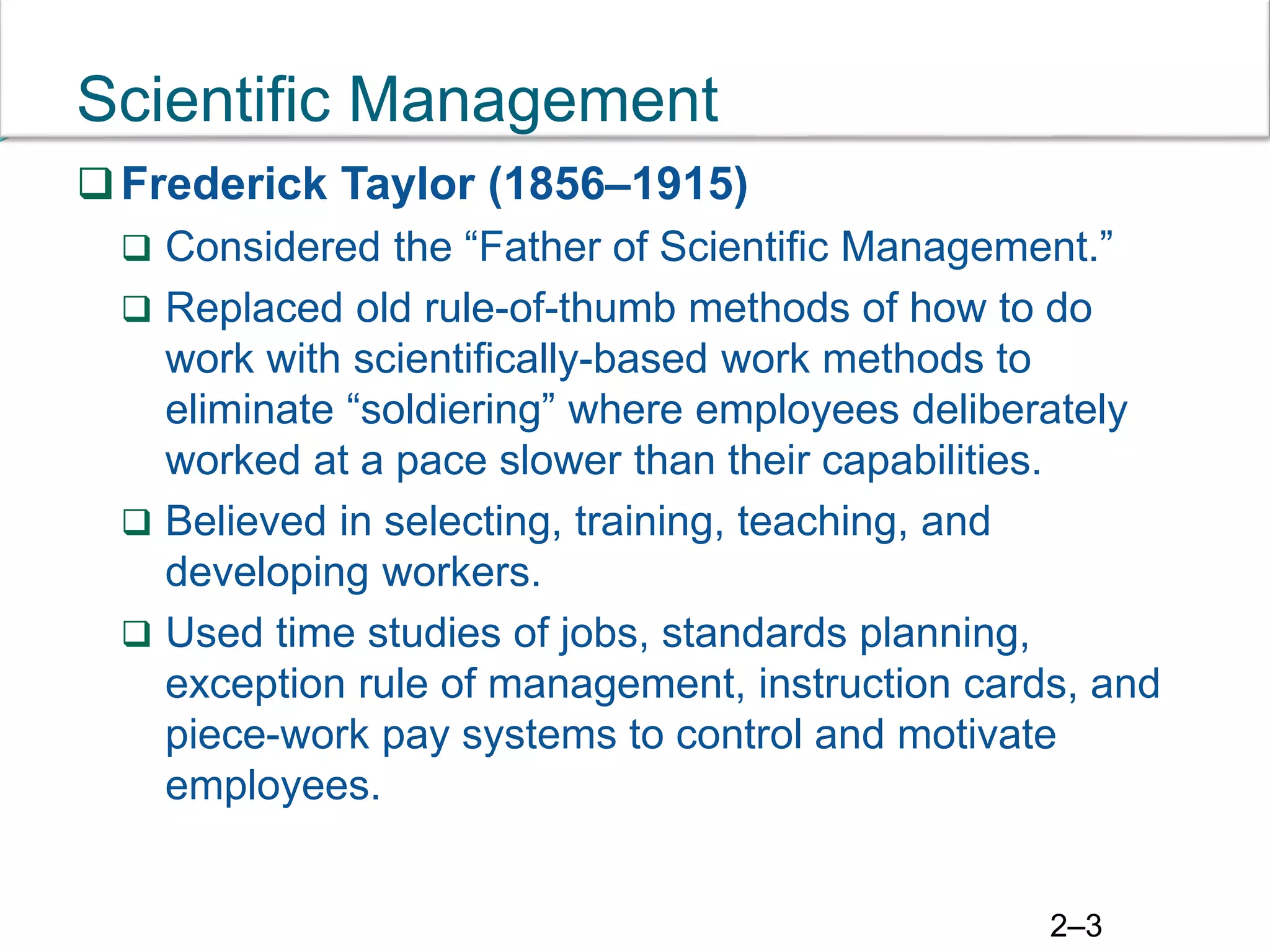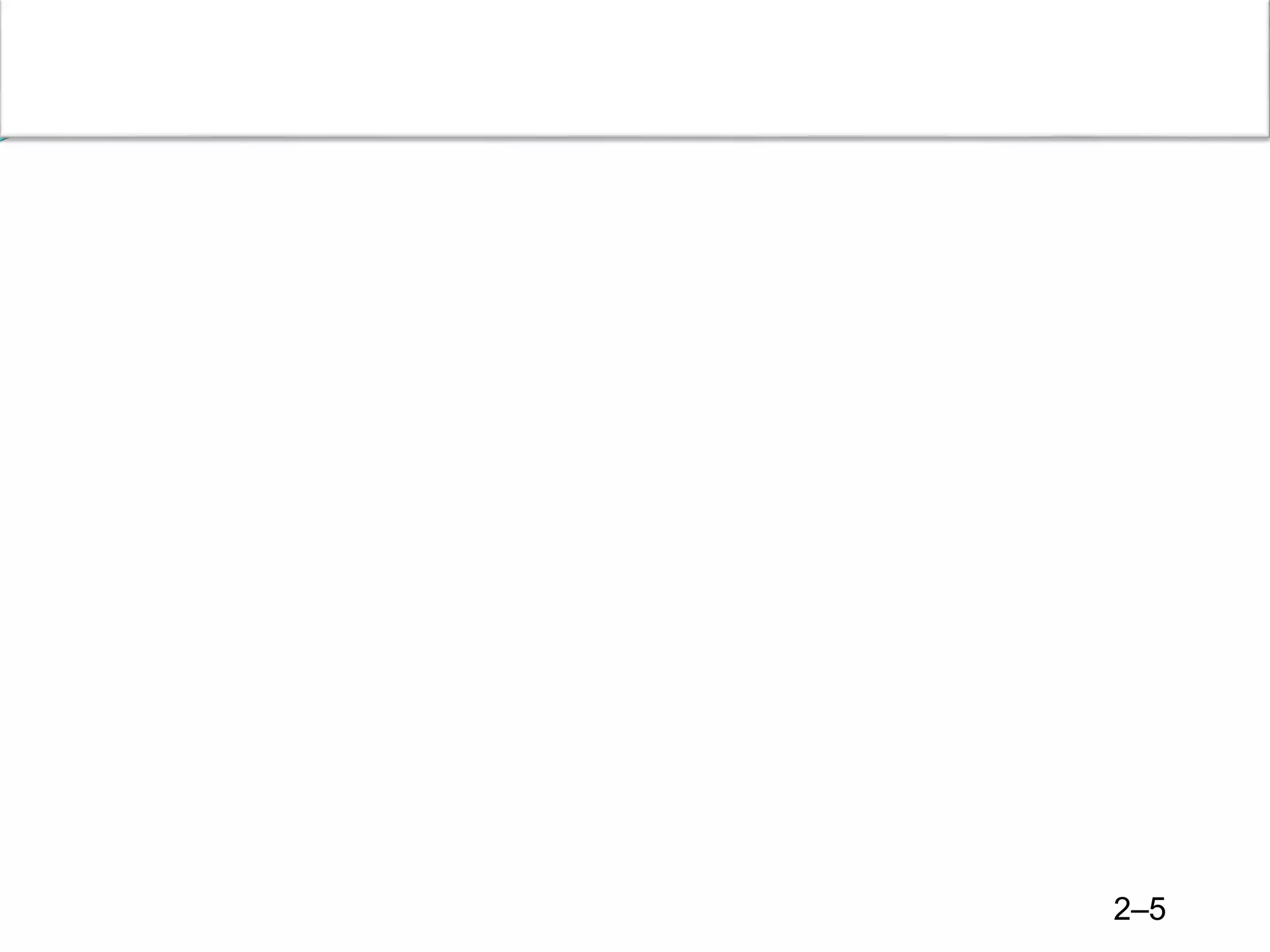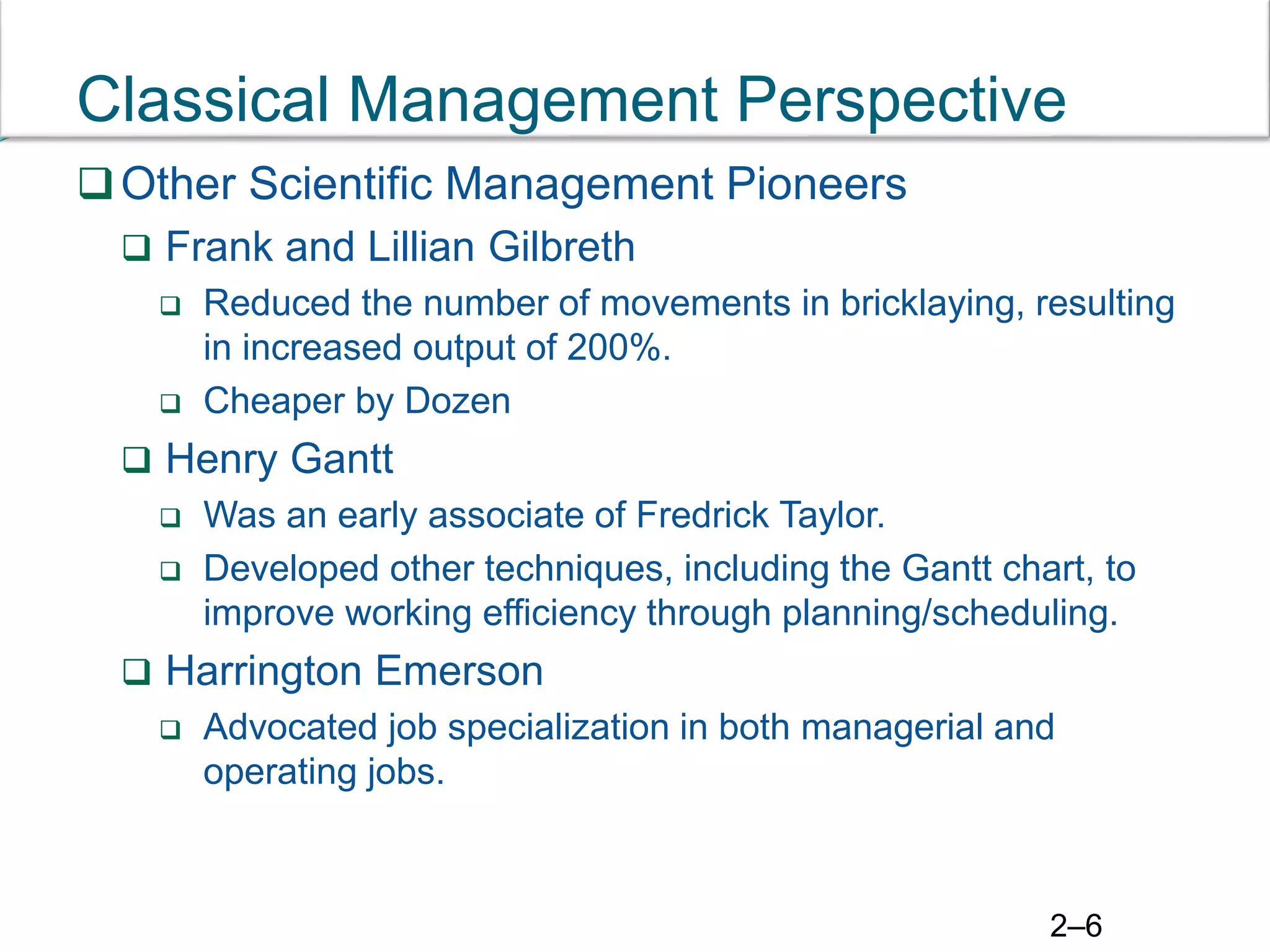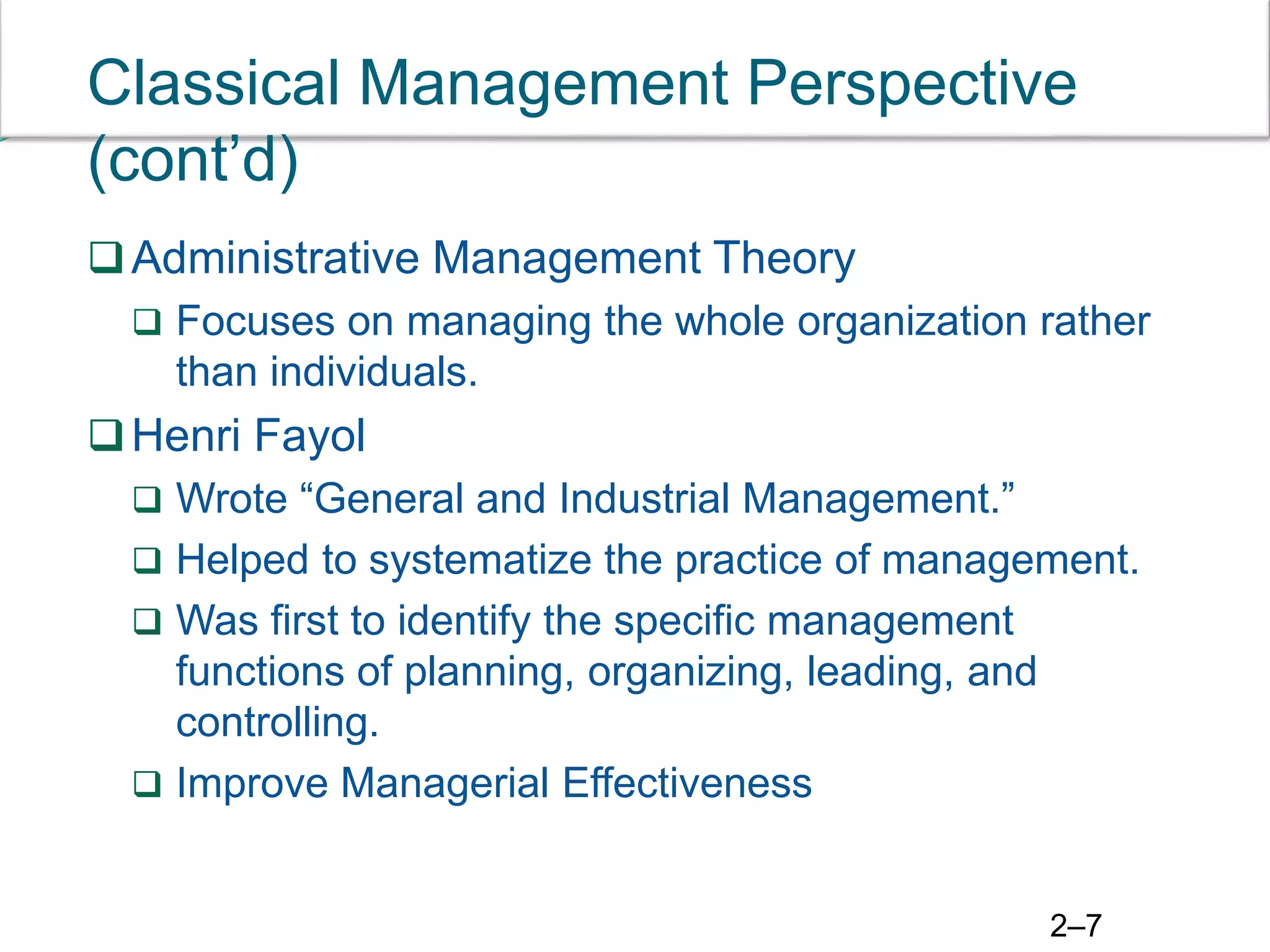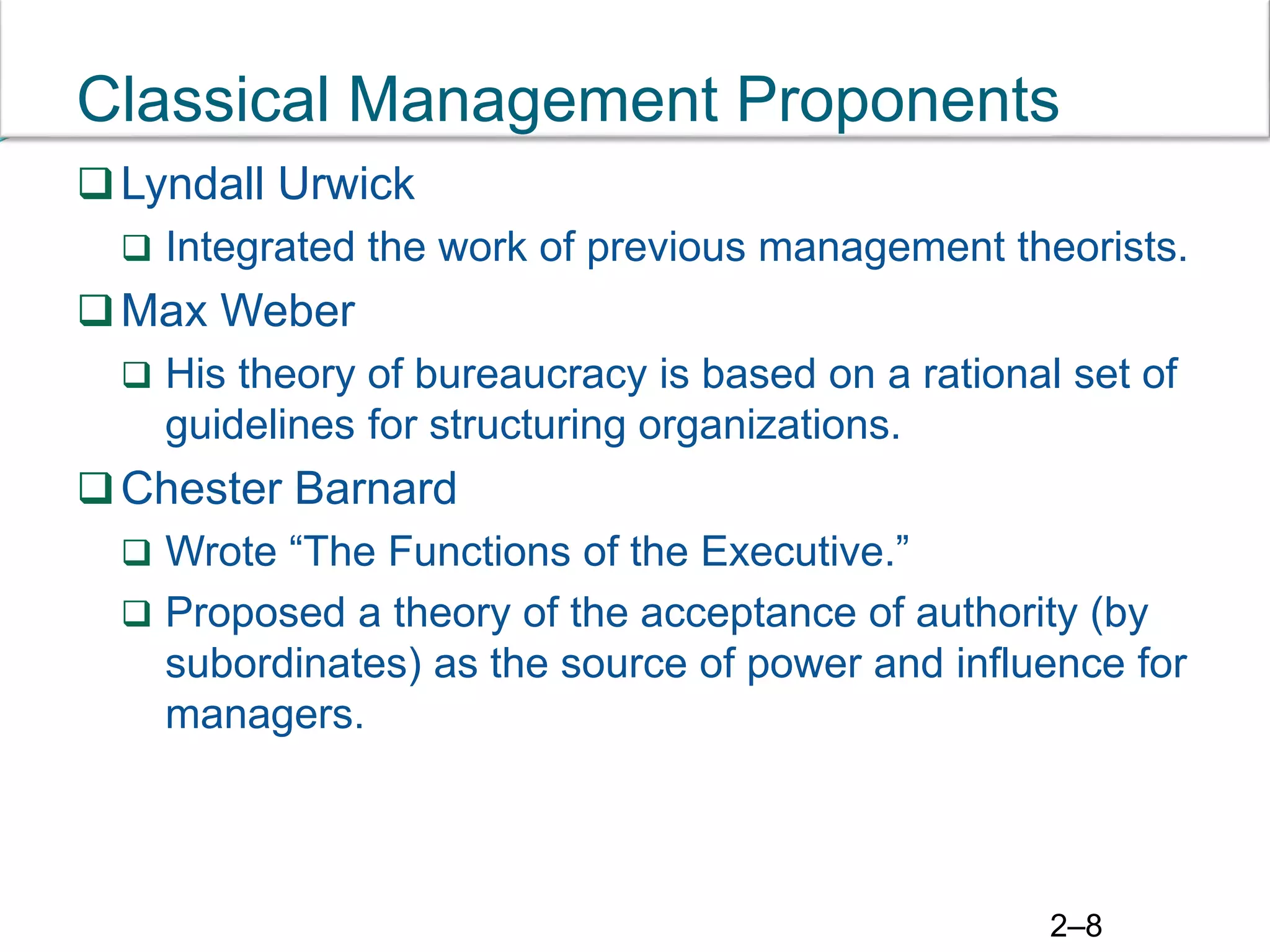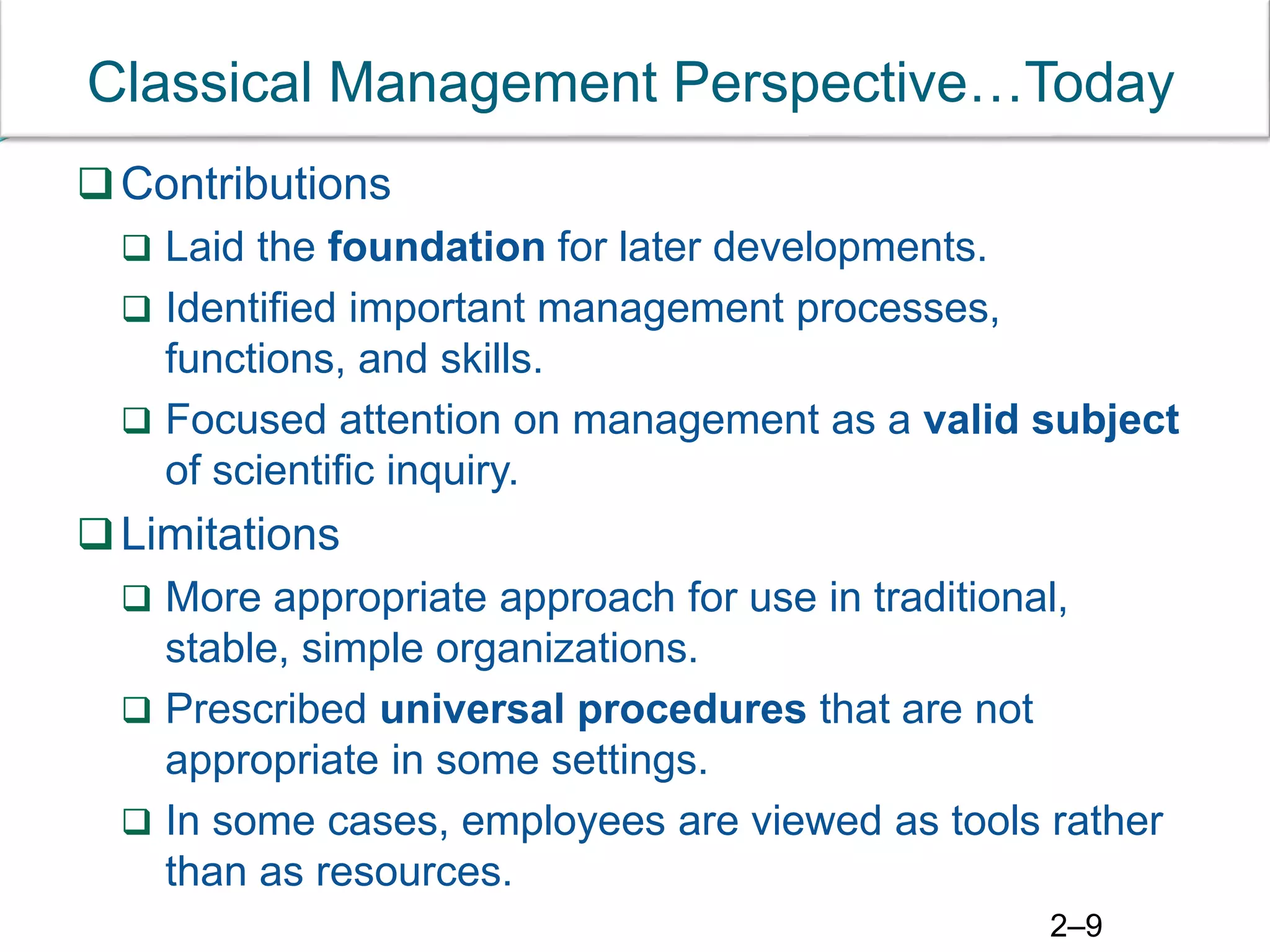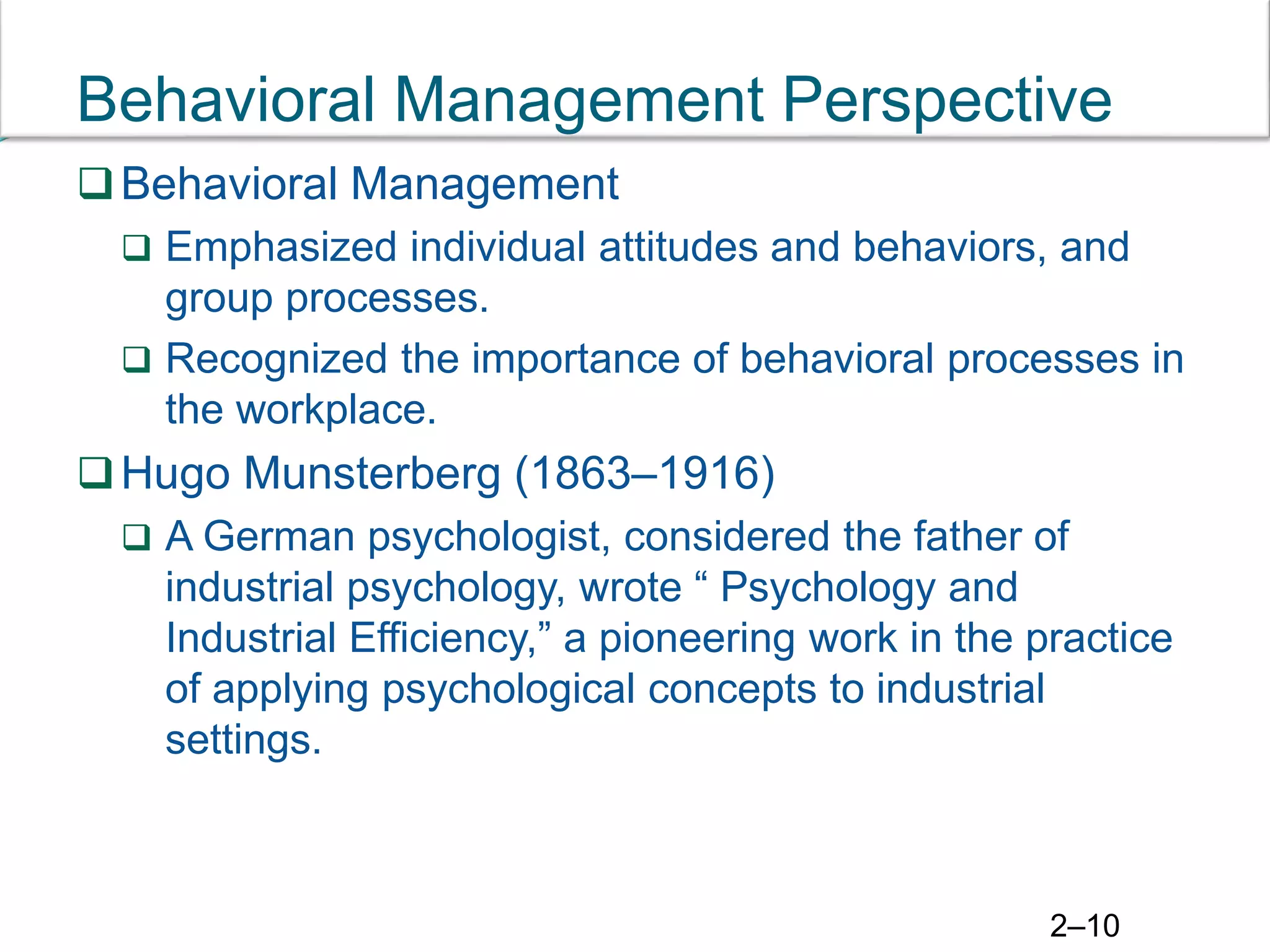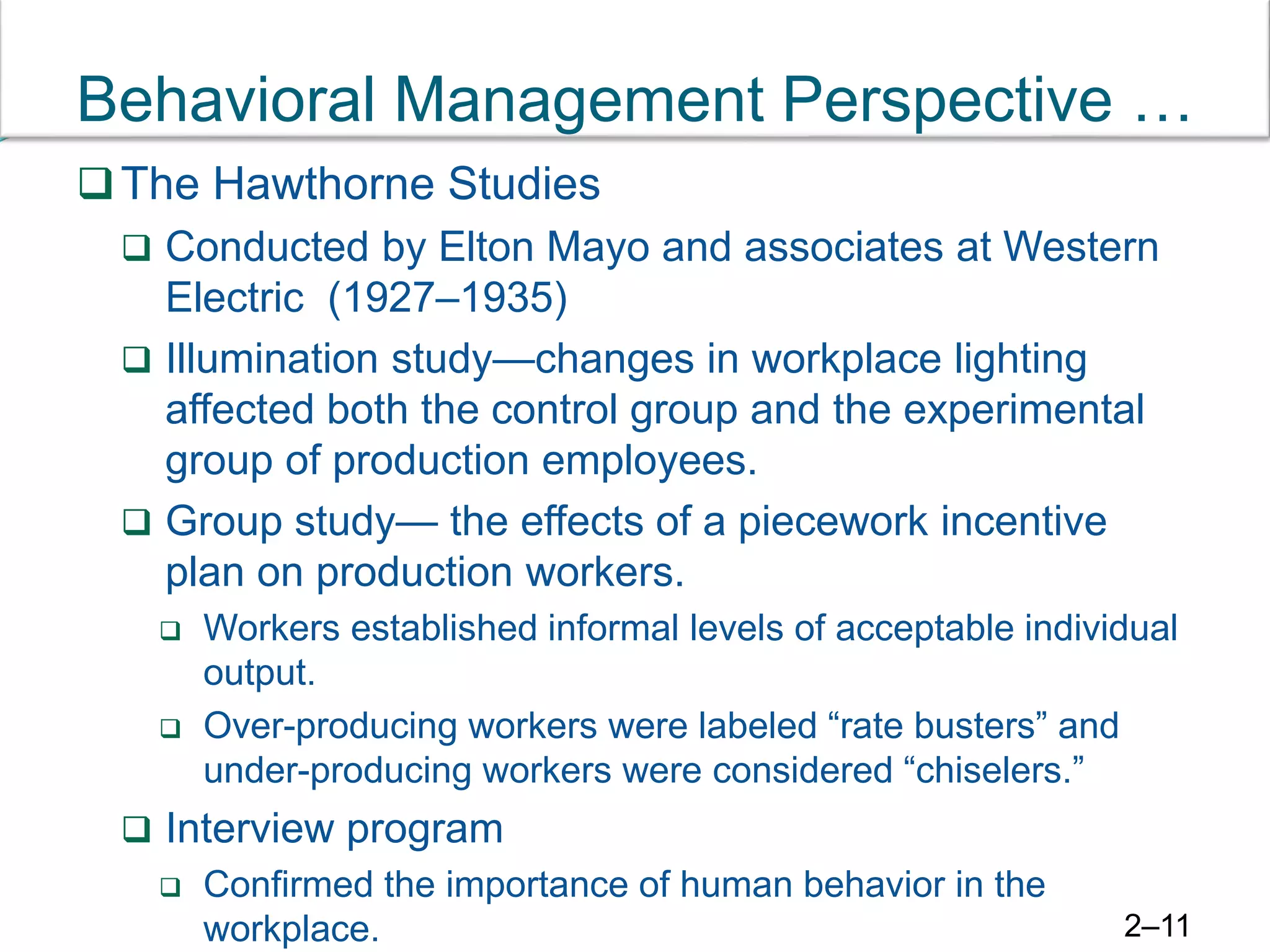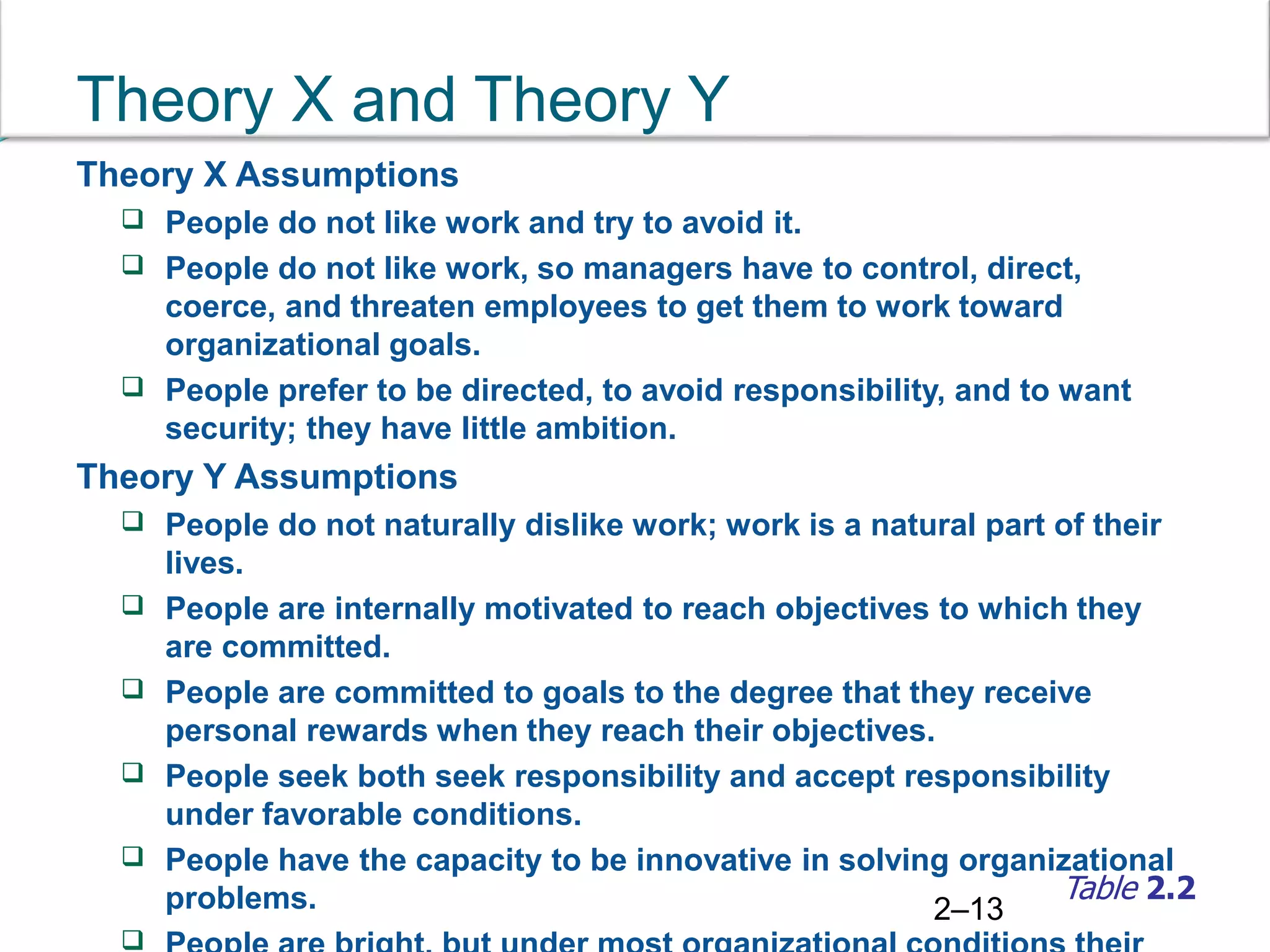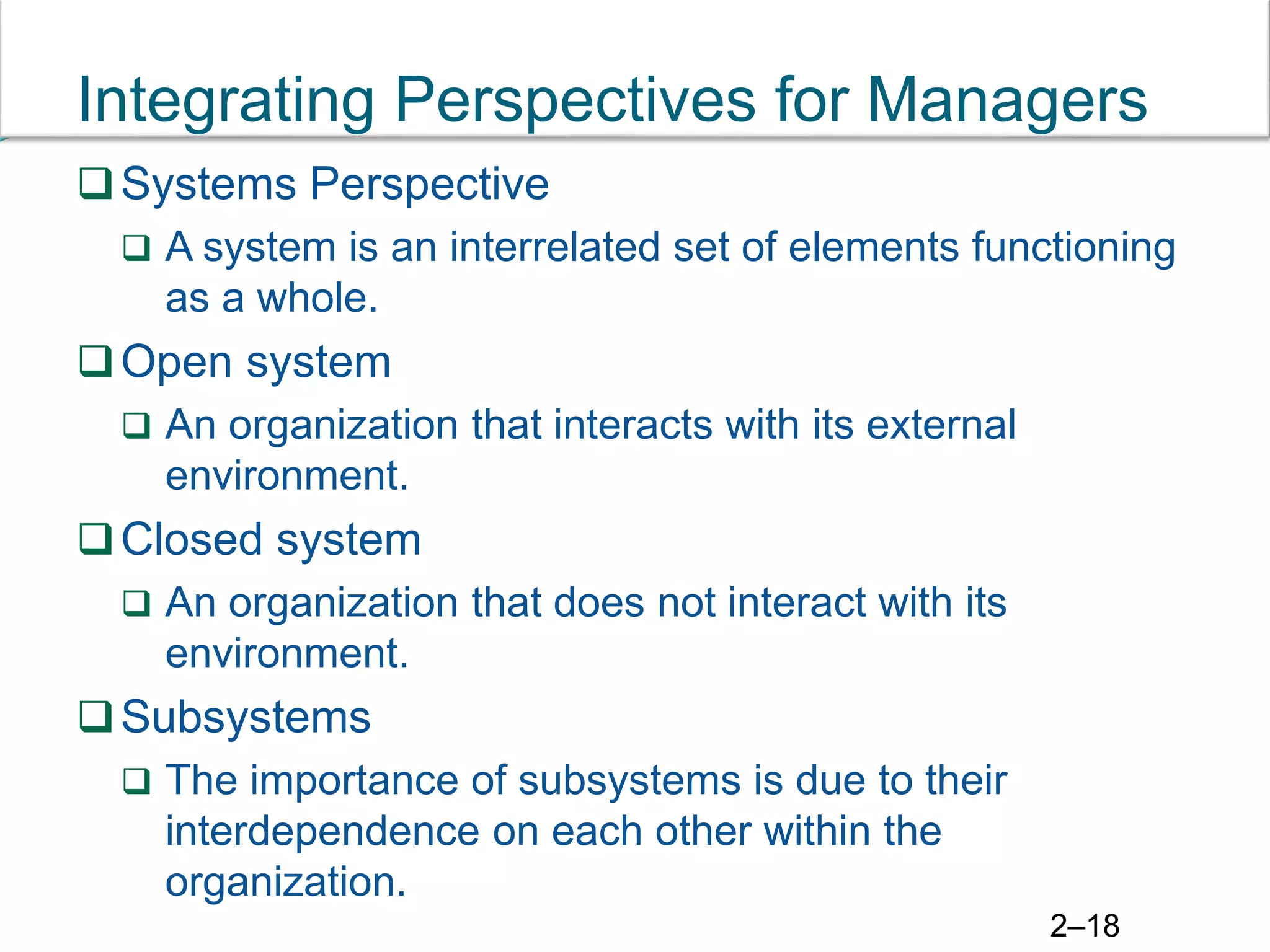The document discusses classical, behavioral, and quantitative management perspectives. Classical management includes scientific management, which focused on improving worker efficiency, and administrative management, which focused on managing the total organization. The behavioral perspective grew out of studies like the Hawthorne studies, emphasizing social and group factors. Quantitative management uses mathematical models and emerged to help with logistical problems in World War II. Contemporary perspectives integrate these views and recognize contingencies based on a organization's situation.

